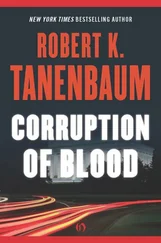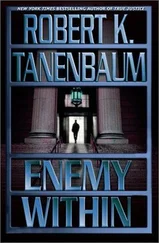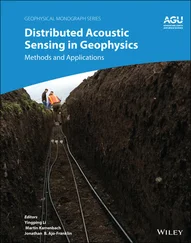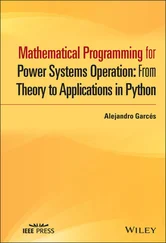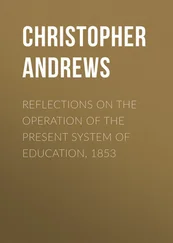DCE provides several semantic options. The default is at-most-once operation, in which case no call is ever carried out more than once, even in the face of system crashes. In practice, what this means is that if a server crashes during an RPC and then recovers quickly, the client does not repeat the operation, for fear that it might already have been carried out once.
Alternatively, it is possible to mark a remote procedure as idempotent (in the IDL file), in which case it can be repeated multiple times without harm. For example, reading a specified block from a file can be tried over and over until it succeeds. When an idempotent RPC fails due to a server crash, the client can wait until the server reboots and then try again. Other semantics are also theoretically available (but rarely used), including broadcasting the RPC to all the machines on the local network.
Time is an important concept in most distributed systems. To see why, consider a research program in radio astronomy. A number of radio telescopes spread all over the world observe the same celestial radio source simultaneously, accurately recording the data and the observation time. The data are sent over a network to a central computer for processing. For some kinds of experiments (e.g., long-baseline interferometry), it is essential for the analysis that the various data streams be synchronized exactly. Thus the experiment succeeds or fails with the ability to synchronize remote clocks accurately.
As another example, in a computerized stock trading system, it might matter who bid first on a block of stock offered for sale. If the bidders were located in New York, San Francisco, London, and Tokyo, timestamping the bids might be one way to achieve fairness. However, if the clocks at all these locations were not properly synchronized, the whole scheme would collapse and result in numerous lawsuits featuring expert witnesses trying to explain the concept of the speed of light to bewildered juries.
To try to prevent problems like these, DCE has a service called DTS (Distributed Time Service). The goal of DTS is to keep clocks on separate machines synchronized. Getting them synchronized once is not enough, because the crystals in different clocks tick at a slightly different rates, so the clocks gradually drift apart. For example, a clock might be rated to have a relative error of one part in a million. This means that even if it is set perfectly, after 1 hour, the clock could be off by as much as 3.6 msec either way. After 1 day it could be off by as much as 86 msec either way. After a month, two clocks that were synchronized precisely might now differ by 5 seconds.
DTS manages the clocks in DCE. It consists of time servers that keep asking each other: "What time is it?" as well as other components. If DTS knows the maximum drift rate of each clock (which it does because it measures the drift rate), it can run the time calculations often enough to achieve the desired synchronization. For example, with clocks that are accurate to one part in a million, if no clock is to ever to be off by more than 10 msec, resynchronization must take place at least every three hours.
Actually, DTS must deal with two separate issues:
1. Keeping the clocks mutually consistent.
2. Keeping the clocks in touch with reality.
The first point has to do with making sure that all clocks return the same value when queried about the time (corrected for time zones, of course). The second has to do with ensuring that even if all the clocks return the same time, this time agrees with clocks in the real world. Having all the clocks agree that it is 12:04:00.000 is little consolation if it is actually 12:05:30.000. How DTS achieves these goals will be described below, but first we will explain what the DTS time model is and how programs interface to it.
Unlike most systems, in which the current time is simply a binary number, in DTS all times are recorded as intervals. When asked what the time is, instead of saying that it is 9:52, DTS might say it is somewhere between 9:51 and 9:53 (grossly exaggerated). Using intervals instead of values allows DTS to provide the user with a precise specification of how far off the clock might be.
Internally, DTS keeps track of time as a 64-bit binary number starting at the beginning of time. Unlike UNIX, in which time begins at 0000 on January 1, 1970, or TAI, which starts at 0000 on January 1, 1958, the beginning of time in DTS is 0000 on October 15, 1582, the date that the Gregorian calendar was introduced in Italy. (You never know when an old FORTRAN program from the 17th Century might turn up.)
People are not expected to deal with the binary representation of time. It is just used for storing times and comparing them. When displayed, times are shown in the format of Fig. 10-15. This representation is based on International Standard 8601 which solves the problem of whether to write dates as month/day/year (as in the United States) or day/month/year (everywhere else) by doing neither. It uses a 24-hour clock and records seconds accurately to 0.001 sec. It also effectively includes the time zone by giving the time difference from Greenwich Mean Time. Finally, and most important, the inaccuracy is given after the "I" in seconds. In this example, the inaccuracy is 5.000 seconds, meaning that the true time might be anywhere from 3:29:55 P.M. to 3:30:05 P.M. In addition to absolute times, DTS also manages time differences, including the inaccuracy aspect.
Fig. 10-15.Displaying time in DTS.
Recording times as intervals introduces a problem not present in other systems: it is not always possible to tell if one time is earlier than another. For example, consider the UNIX make program. Suppose that a source file has time interval 10:35:10 to 10:35:15 and the corresponding binary file has time interval 10:35:14 to 10:35:19. Is the binary file more recent? Probably, but not definitely. The only safe course of action for make is to recompile the source.
In general, when a program asks DTS to compare two times, there are three possible answers:
1. The first time is older.
2. The second time is older.
3. DTS cannot tell which is older.
Software using DTS has to be prepared to deal with all three possibilities. To provide backward compatibility with older software, DTS also supports a conventional interface with time represented as a single value, but using this value blindly may lead to errors.
DTS supports 33 calls (library procedures) relating to time. These calls are divided into the six groups listed in Fig. 10-16. We will now briefly mention these in turn. The first group gets the current time from DTS and returns it. The two procedures differ in how the time zone is handled. The second group handles time conversion between binary values, structured values, and ASCII values. The third group makes it possible to present two times as input and get back a time whose inaccuracy spans the full range of possible times. The fourth group compares two times, with or without using the inaccuracy part. The fifth group provides a way to add two times, subtract two times, multiply a relative time by a constant, and so on. The last group manages time zones.
| Group |
# Calls |
Description |
| Retrieving times |
2 |
Get the time |
| Converting times |
18 |
Binary-ASCII conversion |
| Manipulating times |
3 |
Interval arithmetic |
| Comparing times |
2 |
Compare two times |
| Calculating times |
5 |
Arithmetic operations on times |
| Using time zones |
3 |
Time zone management |
Fig. 10-16.Groups of time-related calls in DTS.
Читать дальше

